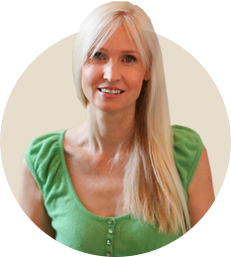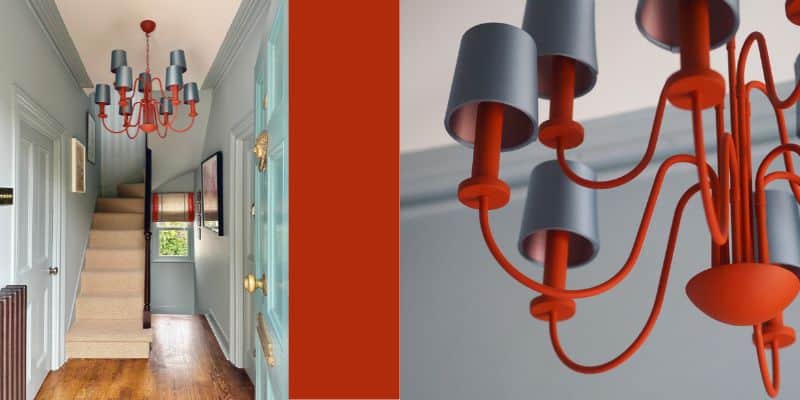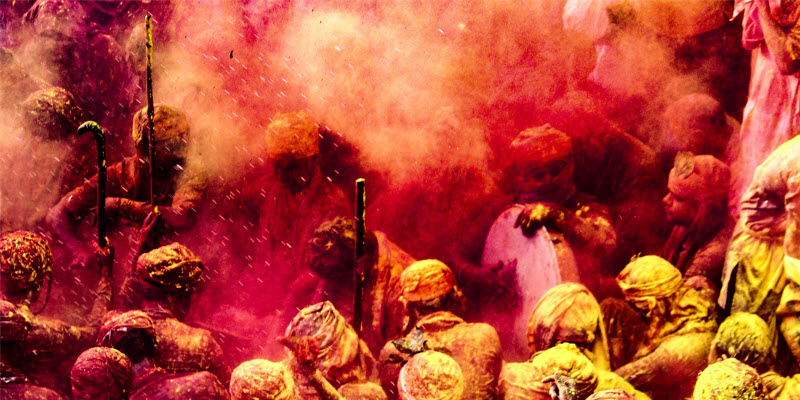Design Professionals, are you riding the colour wave?

Karen Haller

Have you noticed that everything comes in cycles whether that’s fashion or design styles, economic or political ideologies, music genres, lifestyle attitudes?
It’s the same with colour.
Colour has ebbed and flowed over the decades with some being full of colour and others where it was almost non-existent.
This ebbed and flowed is tied to fashionable favour as well as evolutionary changes in society.
As a part of the work that I do with Behavioural design, I look for these ebbs and flows or patterns of behaviour and how these translate into how we use colour and design. So I thought it would be interesting to take a closer look at the journey of colour starting at the beginning of the 20th century to where we are now. In particular you might be interested to read what happened with colour during lockdown from a colour and design psychology perspective.
late 1880 – 1920
This period introduced us to the Art Nouveau style which was at its peak around 1890 – 1905. This period exemplified resurgence of colour in fields of architecture, art and design. Particularly because the use of synthetic dyes and new colour methods that hadn’t been used before. Colour was used as a powerful means of expression for Art Nouveau artists using earthy or jewel-like hues or delicate pastels.
But by the eve of the First World War this wave of colour had completely collapsed.
1920 – 1930
The war ended in the 1920s with Johannes Itten, a teacher at the famous Bauhaus school of Art. He encouraged his students to explore, connect and apply colour to their pieces and in doing so noticed they were favouring certain tones of colours.
During this colour wave, the Art Deco movement was typified by using of lots of colour that lasted well into the 1930s. This use of colour reflected the thinking of this time – freedom from the war, rights for women and the “roaring twenties” a decade of unprecedented affluence and opulence.
The world of design was embracing the emotional connection and the sensory experience of the time.
1939 – 1950
World war 2 stripped the Western world of colour.
The experience of war is centred around survival.
And as a response to the overwhelm and chaos of WWII, one of the many key areas was getting houses built quickly with the design focusing on what was practical and functional. Anything viewed as being purely aesthetic, unnecessary ornamentation or visually pretty were dismissed.
Once again we were stripped of colour.
Architects and designers followed renowned French architect, Le Corbusier view in that a house was “a machine for living in” and called for a “calm and powerful architecture” built of reinforced concrete and steel without any ornament or frills. Purism.
And it was these purist rules would lead the architects to refine and simplify design, dispensing with ornamentation. After WWII this was adopted by many, and architecture became as efficient as a factory assembly line and colour was not on the agenda.
The result was a severing of the emotional connection and the sensory experience of design.
The standard colour palette was concrete grey and white. Cold and austere, just like the economic situation.
1960 – 1980
From the 1960’s and for the next 30 years, we experienced relative stability. We felt safe and secure in our everyday lives. We saw colour starting to make a return.
As we were getting our confidence back, we explored colour again for our home, our clothes and became quite adventurous in our colour saturations, going for more bright colours, our colour combinations, patterns and design styles – hedonistic maximalism! Think tie-dyed clothes, shagpile carpets and psychedelic wallpaper prints.
This adventure in colour was a reflection of our desire to assert independence, rebelling against society’s norm and with more disposable income came more choice for self-expression.
So using bold, bright colours was a way to express how we felt or wanted to feel. It’s like turning the emotional dial right up, like a radio. It’s the colour equivalent of being loud, getting noticed and being full of energy.
1990 to 2010
As we moved into the 90’s, 2000’s and then into 10’s we experienced the world change and shift at a rapid pace through technology, global markets and global communication.
Plunged into austerity by mid 2000’s, the majority of us experienced difficult economic conditions resulting in job loss or lack of job security. We easily became confused and overwhelmed with everyday life.
Change was happening much quicker than we could often take in. Life was full of uncertainty.
And once again we can see this change through colour choices. We moved away from busy pattern and bold colours to the adoption of ‘neutrals’. Colours that were low in saturation like white, beige, grey, and a mnimalist pared back design style.
The softer, lighter, paler a colour is, typically more soothing and relaxed we feel. It makes sense that the majority of us were reaching for these colours if we are feeling overwhelmed with what was going on in the world and the uncertainty of everyday life.
Where we had used the bold, bright colours that turned the emotional dial right up, now we were turning the emotional dial right down. These colours allow us to hide, hibernate and feel to a lesser extent what was going on around us.
It was during this time that we saw the rise of ‘pops of colour’ being employed. The small ‘pops’ of bright colour was often used as a quick fix to counteract the low energy, emotionally tiring environment.
2010
We can see that the laws of momentum have been causing the colour wave to ebb and flow throughout recent history, so where is it now?
The first part of the last decade felt like we were living in a sea of grey. But from the middle of the decade I could see there was an interest in colour again, which is always a strong indicator that we are heading towards the next colour wave.
Unlike the last high wave in the ‘60s and ‘70s, what’s different this time around is people are increasingly interested in wanting to use colour to express not just themselves and their personality but also to enhance their lifestyle, health and well-being. They no longer want to shut themselves down emotionally or to follow trends slavishly but instead to use colour conscious.
Now that we are in a time that people felt safer again, they feel more confident to experiment and to express themselves through colour.
We could see this in the TV commercials, in the advertisements where so many big brands are using colour not just in the colour choices available but as their actual campaign. For example, FIAT came out with a rainbow of car colours and Apple did the same for their mobiles.
By the end of the decade we were riding high on the colour wave.
2020 – 2022 Lockdown
And then something happened that none of us saw coming. A pandemic that caused a two-year lockdown.
In the first few months I had a lot of people contacting me saying they no longer liked their ‘neutral’ homes. They found them dull, boring, uninspiring. They themselves were lacking motivation, and their home environment left them feeling tired.
They were surprised that they found themselves wanting to bring in lots of bold, bright colour. They wanted to understand what was happening which is why they called me.
And they weren’t alone. During lockdown I was invited to explain what was going on in podcasts, panel discussions and media interviews.
And from a colour psychology perspective, here’s what was going on…
The impact of the pandemic was we were no longer going out and socialising with friends, family or work colleagues, no more shopping, dining out or any public activities. It all came to a dead stop and we no longer had our external stimulation.
When we have a lot of external stimulation, for some of us, we want to come home to a quiet with no noise, to shut the door on the world outside. And many used ‘neutrals’ to create this quiet – by removing any stimulating sensory noise and lower their emotional state.
Because external stimulation was removed, their home was no longer giving them what was needed as their needs had changed.
What I noticed is people going one of two ways:
- Those that wanted to stay away from the world, hunker down and feel safe and secure, stayed with the grey and white. It’s a way to feel safe and detach from the emotional overwhelm. It’s almost desensitising.
- Then there were others that craved emotional stimulation, the excitement, the energy of bright, bold colours. Bringing vivid more vivid colours into their home raised their emotional energy and helped them feel more optimistic, positive and brought in some much needed joy.
Beyond lockdown
I’ve noticed since things have returned to normal-ish, is the need to break free and let go of restrictions. So it’s no surprise that we have returned to the 1970’s to hedonistic maximalist bright colour combinations, pattern on pattern and anything goes design styles.
We are definitely on a colour wave, but it’s to the extreme. It’s a reaction to the sensory shutdown during the pandemic.
People are making up for lost time with their bold use of colour.
That’s were we are at right now, but what I’m watching and waiting to see if this extreme response results in people returning their homes back to their quiet ‘neutrals’ because they feel overwhelmed as they are now receiving all that external stimulation.
New colour paradigm
In my e-book, I refer to this time in our history as a new colour paradigm because we now exist in a new way of thinking about and using colour consciously to support mental, emotional and physical well-being of humans.
What excites me most about this time, is there is still so much scope for us to bring this thinking and bring this conscious use of colour into the design world so that we use colour to influence, not just adorn.
We now want our colour choices to do more than ever before. We want them to reflect and fulfil our emotional needs as individuals, homeowners and business owners. It’s a big ask. And one that can only be addressed through the appropriate and skilled use of applied colour psychology.
If this article speaks to you and you want to enhance your ability to work with colour at this evolutionary time, then download free my e-book. That will support you to use colour even more consciously for your clients.
Colourfully yours,
Karen
Original article written: March 2016
Updated: June 2023
Image: Sean Click


